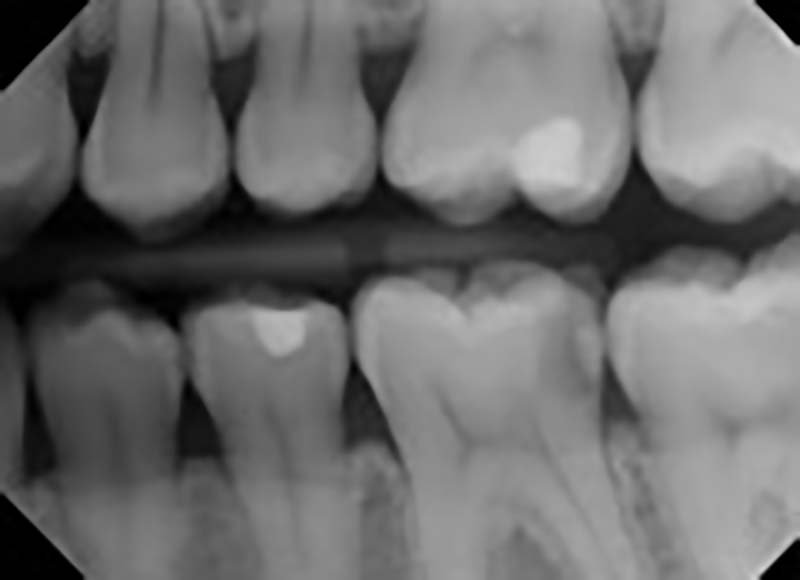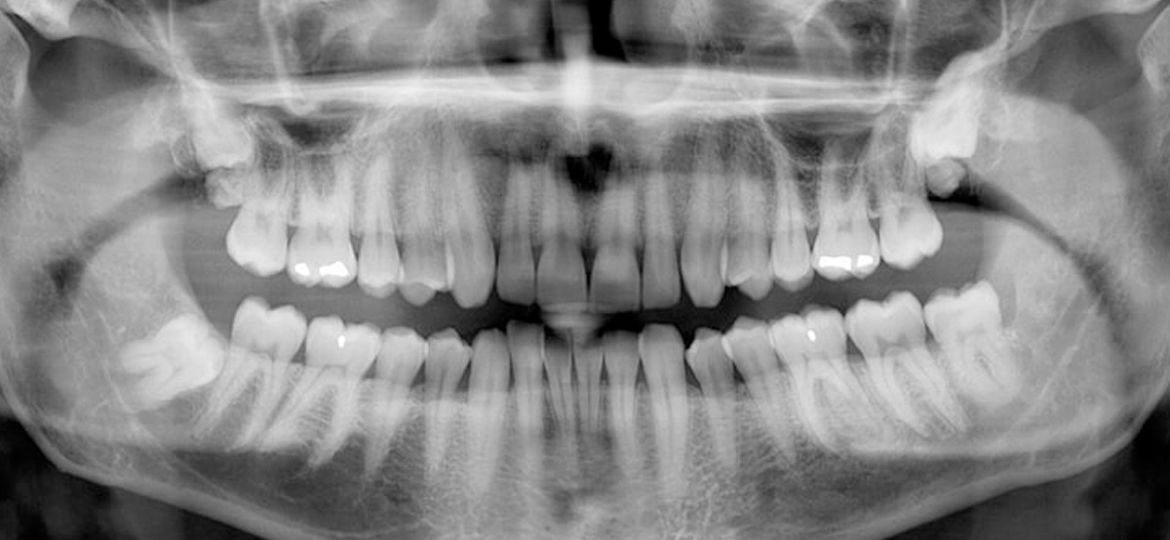Oral Cancer Screening
According to the American Cancer Society, 30,000 new cases of oral cancer are diagnosed every year. As with any form of cancer, the key to effective detection… read more.
Cleaning (Prophylaxis)
Prophylaxis is simply the dental professionals term for a dental cleaning. The cleaning is a preventative measure designed to remove plaque and other dental dangers from your teeth. The build up of tartar and plaque is the root cause of most dental problems. Prophylaxis is known to prevent cavities and periodontal disease and catch potential dental issues early. Regular brushing and flossing can’t remove all plaque and tartar, making a regular dental cleaning even more important. We do offer same day hygiene appointments when available.
Fluoride Treatment
The Benefits of Fluoride Treatment
What is a fluoride treatment? It’s a regular part of your six-month dental check up. The process serves to strengthen your enamel and prevents tooth decay. At Miramichi Smiles Family Dentistry, we offer the treatment as a preventative measure, but it can serve to rejuvenate as well.
Fluoride is a natural part of the human diet and can be found in meats, eggs, dairy, vegetables, grains and water. While these natural sources can meet our day-to-day fluoride needs, higher concentrations are needed to prevent tooth decay. When you visit our dentist, you get the benefit of a professional fluoride treatment. However, we may recommend a personal or home treatment for the following reasons:
Sensitive or exposed tooth roots
Excessive or frequent sugar intake
Poor to fair oral hygiene routine
Inadequate dietary fluorides
Deep fissures on teeth’s chewing surfaces
Low saliva levelsa
History of periodontal disease
Two Types of Fluoride
Systemic fluoride can benefit fully exposed teeth as well as those developing beneath your gums. This type of fluoride is readily available in many foods and community water supplies. However when needed, your dentist can recommend dietary supplements to better protect teeth. Because these measures target developing teeth as well, they are most frequently prescribed to children and teens.
For adults, topical fluorides are likely to be most relevant and common. The gels, rinses and toothpastes seep into your teeth’s outer surface to strengthen the enamel. Your dental professional will also apply a professional grade topical fluoride when you are in the office for you six-month check up.
While fluoride is an important step in preventative oral care, it is not the ultimate solution to periodontal disease. Even with appropriate levels of fluoride in your normal oral hygiene routine, you must continue to floss and brush your teeth regularly to keep periodontal disease at bay. Ask your dentist what toothpastes, mouth rinses and other dental products are the best source of balance fluoride. Oral care requires a holistic approach, so don’t let your fluoride treatment do all the work alone.
Scaling & Root Planing
As tartar and plaque build up around the gums and teeth over time, the gum tissue becomes inflamed and a condition known as gingivitis can occur. In its simplest form, gingivitis can cause the gums to be sensitive and red, and in more complicated cases, may ultimately cause tooth and bone loss. Fortunately, gingivitis can be approached with treatments like scaling and root planing in order to head off the progression of the disease.
Scaling and Root Planing for Treatment and Prevention
This option may be used in order to treat gingivitis, or to prevent it from getting out of control. If you are prone to periodontal disease, scaling and root planing may be used as a preventative measure. Advanced treatment methods like these are used to:
What Is Scaling & Root Planing?
Once a dentist has thoroughly examined your mouth, taken X-rays and made a diagnosis, it may be time to start treatment in order to prevent or treat gum disease. Every patient is different, and we customize a treatment plan to work for the severity of your condition and any other special circumstances you have.
During the scaling process, an ultrasonic scaling tool may be used to remove plaque and calculus from the surface of the tooth. In some situations, an antimicrobial agent is also inserted beneath the gums in order to reduce the levels of harmful bacteria in the mouth.
Root planing is the process of literally smoothing the tooth in order to promote healing after the removal of toxins, tartar and unwanted microorganisms. When the teeth are smooth and clean, it’s more difficult for bacteria to colonize and grow.
These procedures are essentially used to deep clean the teeth and gums and remove bacteria that can be extremely harmful to the mouth. At times, antimicrobials are given in order to ensure that the gums heal quickly after treatment.
Oral Examinations
Be Proactive With Regular Oral Examinations
When you step into a dentist’s office every six months, you get a normal check up to ensure everything is in working order. Oral examinations are just the one step in the oral care process, but why is it so essential?
Why Are Oral Examinations Important?
Did you know most periodontal diseases are entirely preventable? Did you know if you catch gum disease early enough most symptoms and effects are reversible? Periodontal exams are essential for proactive treatment of gum disease. Especially for growing patients, comprehensive dental exams can catch potential issues early and maximize treatment efforts and positive effects.
What Are Comprehensive Dental Exams?
A full oral examination will vary depending on the patients needs, but this is the expected process for most patients:
Overall health and hygiene: Tooth decay and periodontal disease can often be linked to other medical ailments and poor oral hygiene. For this reason, most oral examinations will begin with an overall evaluation.
Periodontal risk: Your dentist will analyze your personal risk for tooth decay, bone disease and root decay during your periodontal exams.
Determine need for tooth restoration: If you need a filling or similar dental solution, your dentist will identify the problem area at this time.
Check your bite: The way you bite can change overtime, so check for possible jaw and bite problems is part of periodontal exams.
Stain and plaque removal: Using a variety of techniques, your dentist will clean your teeth as needed.
Take dental X-rays: X-rays won’t likely be required for every dental visit, but they are great diagnostic tools for comprehensive dental exams.
More About the Dental X-ray
What kinds of X-rays are used for oral examinations? The specific method used will depend on the needs of the patient. However, the most common X-ray types used in dental exams are:
Panoramic X-rays give your dentist a view of your entire mouth.
Bitewing X-rays allows a good crown view of your upper and lower teeth. You’ll bite on a film holder during the X-ray.
Occlusal X-rays show how your teeth fit together.
Periapical X-rays give a view of the tooth and surrounding bone.



Dental Sealants
Guard Against Cavities With Dental Sealants
Dental sealants help protect your teeth in the moments when brushing and flossing can’t. A sealant is simply a thin coating on molars, premolars and any fissures/pits in your teeth. With the minuscule piece of composite resin in place, your teeth are protected in any situation.
Why Are Sealants a Great Idea?
Your dentist applies the sealant because over majority of tooth decay starts in the deeper grooves of your teeth. Brushing, flossing and rinsing regularly help you maintain great oral health, but bits of plaque and tarter can hide away in the grooves of your molars and premolars.
With sealants in place, you know you can achieve a thorough self-care. The thin resin protects the vulnerabilities in these areas, making your overall oral care routine more effective.
Who Should Have Dental Sealants?
If you ask our dentist, everyone should have sealants. Why?
Adults: If you have a history of gum disease or frequently forget to floss, snack, or eat cavity causing foods, sealants will help you protect your teeth. Even if you don’t have tooth decay, sealants protect you from future issues.
Kids and Teens: One of the most cavity prone populations are kids between the ages of 6 and 16. As soon as those permanent teeth come in, protect them with a sealant to augment your child’s oral care routine and prevent having to manage a more complex treatment.
Infants: Sometimes baby teeth have grooves or depressions that must be protected also. Though these teeth aren’t permanent, they are important for maintaining proper spacing for adult teeth and chewing for nutrition. It is much easier, and less expensive to prevent decay then treat it.
How Are Sealants Placed?
Our dentist will place your dental sealants using this process:
Clean target teeth
Dry teeth
Place absorbent material around tooth to keep it dry
Special etchant is used to prep the tooth for sealant
Rinse and dry teeth
An bonding agent is scrubbed on the groove
Sealant is placed directly on tooth
Curing light may be used to help the sealant harden
How Long Do They Last?
Your sealants can be expected to last up to 10 years, but you’ll need to visit your dentist regularly to check for any chips or other wear and tear. If necessary, your sealants can be easily touched up or replaced to continue adequate and full protection of your teeth.








